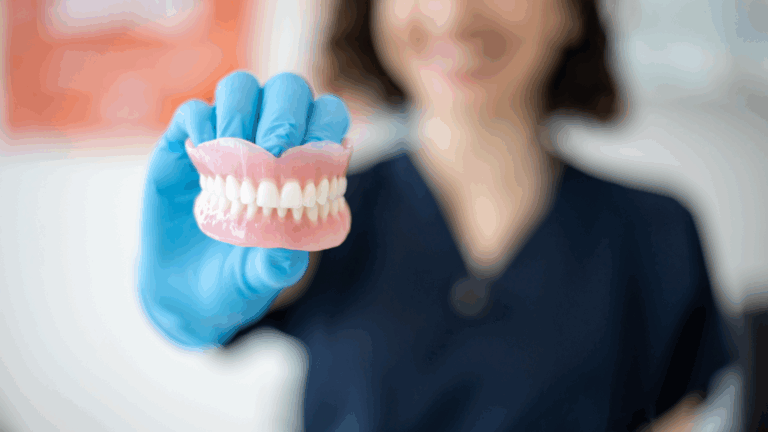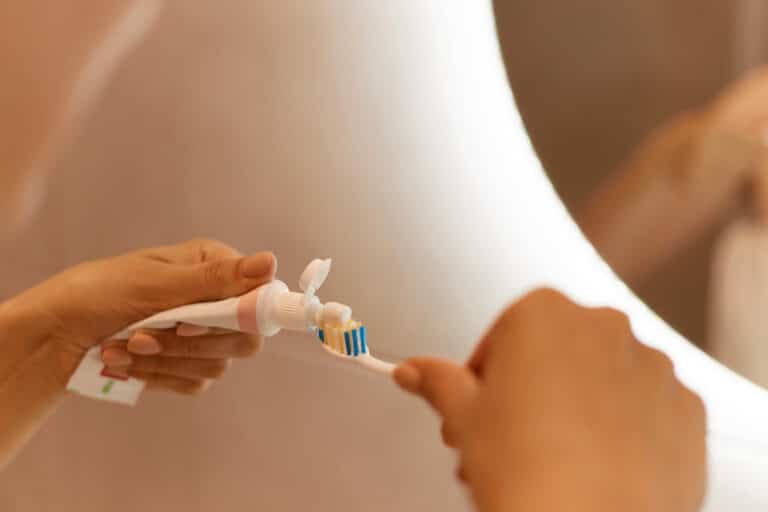We embark on a journey into the realm of gum grafts, a transformative procedure that goes beyond aesthetics, addressing the core of gum health. Join us as we unravel the intricacies of gum graft surgery, exploring its types, benefits, potential risks, and the comprehensive care that accompanies this dental intervention. Whether you’re seeking solutions for gum recession, contemplating the procedure, or simply curious about the world of oral health, our insightful guide aims to enlighten and guide you every step of the way.
What is a gum graft?
A gum graft is a dental procedure designed to address receding gums. When gums recede, it can lead to a range of issues, from increased tooth sensitivity to aesthetic concerns. During a gum graft, a small piece of tissue, often taken from the roof of the mouth, is transplanted to cover exposed tooth roots. This helps restore gum tissue and prevent further recession.
Types of gum graft
When it comes to gum grafts, understanding the various types is key to appreciating the tailored approach this procedure offers. Let’s delve deeper into the three primary types: connective tissue graft, free gingival graft, and pedicle graft.
Connective tissue graft
- This graft is often chosen to treat exposed tooth roots. During the procedure, a small piece of tissue is harvested from beneath the surface layer of the palate, known as the connective tissue. This tissue is then delicately placed over the exposed roots, effectively restoring the gumline.
Free gingival graft
- When an individual requires additional gum tissue for thickening or to address areas of recession, the free gingival graft is a common choice. In this technique, tissue is directly taken from the roof of the mouth and secured to the targeted area, enhancing the thickness of the gum.
Pedicle graft
- This graft involves using tissue from the gum near the affected tooth. Instead of completely detaching the tissue, a flap is created, and the tissue is partially cut to allow for its repositioning over the exposed roots. The proximity of the tissue source simplifies the surgical process.
Our experienced dental team takes a meticulous approach, considering your specific needs and the characteristics of your gum recession to recommend the most suitable graft type. The goal is not just to address the issue at hand but to ensure a harmonious integration with your unique oral anatomy. If you’re curious about which graft type might be best for you, don’t hesitate to book a consultation with our clinic.
What are the advantages of gum grafting?
Gum grafting, as a dental procedure, offers a myriad of advantages that extend beyond the primary goal of addressing gum recession. Let’s delve deeper into these benefits to provide you with a more comprehensive understanding of why considering gum grafting could be beneficial for your overall oral health.
1. Improved aesthetics: One of the primary reasons individuals opt for gum grafting is to enhance the aesthetic appearance of their smiles. Gum recession can lead to a “toothy” or uneven gum line, making teeth appear longer than usual. By restoring the gum tissue through grafting, a more balanced and visually pleasing smile can be achieved.
2. Reduced sensitivity: Exposed tooth roots resulting from gum recession often lead to increased tooth sensitivity, particularly to hot, cold, or sweet stimuli. Gum grafting acts as a protective barrier, covering these sensitive areas and significantly reducing discomfort. This, in turn, allows individuals to enjoy a wider range of temperatures and textures in their diet without the fear of dental sensitivity.

3. Enhanced overall oral health: Gum health is integral to overall oral well-being. Beyond the cosmetic benefits, gum grafting contributes to the overall stability and health of the teeth. By preventing further gum recession, the procedure helps maintain the integrity of the tooth-supporting structures, reducing the risk of tooth loss in the long run.
4. Protection against decay: Exposed tooth roots are more susceptible to decay, as they lack the protective enamel covering present on the crowns of the teeth. Gum grafts provide a vital shield, covering these vulnerable areas and reducing the risk of decay. This proactive approach to oral health can save individuals from potential dental issues down the road.
5. Contribution to tooth stability: Gum recession can compromise the stability of teeth, leading to mobility and potential tooth loss. Gum grafting reinforces the supportive structures around the teeth, contributing to their stability and longevity. This is particularly beneficial for individuals looking to preserve their natural teeth and avoid the complications associated with tooth loss.
If you are considering gum grafting or have further questions about the procedure, our experienced dental team is here to provide personalised guidance based on your unique needs and goals.
What are the risks of gum graft surgery?
Gum graft surgery, like many medical interventions, comes with its set of potential risks. It’s crucial to be aware of these factors to make informed decisions about the procedure. Here’s a closer look at the potential risks associated with gum graft surgery:
- Infection Infections can occur after any surgical procedure, and gum graft surgery is no exception. The surgical site is susceptible to bacterial contamination, which can lead to infection. To mitigate this risk, our dental professionals adhere to strict sterilisation protocols, and patients are often prescribed antibiotics as a preventive measure.
- Bleeding Bleeding is a common concern after any surgery, including gum grafting. While some bleeding is normal immediately after the procedure, excessive or prolonged bleeding could be a risk. Our experienced dental team employs meticulous techniques during surgery, and patients are provided with post-operative care instructions, including how to manage and monitor bleeding.
- Adverse reaction to anaesthesia Anaesthesia is administered during gum graft surgery to ensure that patients experience minimal discomfort. However, there is always a small risk of an adverse reaction to the anaesthesia. Before the procedure, our dental team conducts a thorough examination of the patient’s medical history to identify and mitigate any potential complications related to anaesthesia.
Patients are encouraged to communicate openly with our dental professionals about their medical history, any concerns they may have, and any symptoms experienced during the recovery period. This proactive approach ensures that any issues are addressed promptly, contributing to a successful and uneventful recovery.
While risks are inherent in any medical procedure, the benefits of gum graft surgery in addressing gum recession and improving overall oral health often outweigh these potential concerns. The key lies in choosing a reputable clinic with experienced professionals who prioritise patient safety and well-being throughout the entire process.
Who needs gum grafting?
Gum grafting is a tailored solution designed for individuals grappling with gum recession, a common concern with diverse underlying causes. If you’ve observed your teeth appearing longer than before or have started experiencing heightened sensitivity, you might be a prime candidate for this transformative dental procedure.
If you resonate with the following indicators, gum grafting could be the solution you need:
- Visible gum recession: If you can visibly see that your gums have receded, especially around certain teeth, it’s a sign that intervention may be necessary.
- Tooth sensitivity: Heightened sensitivity to hot, cold, or sweet stimuli is a common symptom of exposed tooth roots resulting from gum recession.
- Altered tooth appearance: The perception that your teeth appear longer than usual might indicate gum recession, altering the aesthetics of your smile.
If you relate to any of these signs, it’s crucial to consult our experienced dental professionals. A comprehensive examination will be conducted to assess the extent of gum recession and determine the most suitable course of action. Our team is dedicated to guiding you through the process, ensuring you understand the procedure and its potential benefits tailored to your unique needs.
What to expect before, during, and after gum graft surgery?
Curious about the gum grafting process? Embarking on the journey of gum graft surgery involves a careful and comprehensive process that prioritises your comfort and sets the stage for optimal results. Let’s take a closer look at each phase:
Before the gum graft surgery: A thorough examination and consultation

Before the actual procedure, our experienced dental team conducts a meticulous examination of your oral health. This involves assessing the extent of gum recession, identifying the most suitable type of gum graft, and addressing any concerns or questions you may have. During this consultation, we take the time to explain the procedure in detail, ensuring you are fully informed and comfortable with the upcoming steps.
During the gum graft surgery: Painless restoration with local anaesthesia
On the day of the surgery, you can expect a seamless and virtually painless experience. Local anaesthesia is administered to the treatment area, ensuring that you remain comfortable throughout the procedure. With your well-being in mind, our skilled professionals work diligently to execute the grafting process. Whether it’s a connective tissue graft, free gingival graft, or another type tailored to your needs, rest assured that your journey to restore gum health is in expert hands.
After the gum graft surgery: Nurturing Your recovery with post-operative care
Following the completion of the gum graft surgery, a crucial phase of recovery begins. Our commitment to your well-being extends beyond the operating room, as our team provides you with detailed post-operative care instructions. These guidelines encompass various aspects, including oral hygiene practices, dietary recommendations, and the use of any prescribed medications. By following these instructions diligently, you play an active role in facilitating the healing process and ensuring the longevity of the graft’s success.
During the postoperative period, it’s normal to experience some mild discomfort or swelling. If you have any further questions or if you’re ready to take the next step towards healthier gums, don’t hesitate to reach out to our dedicated team. We encourage open communication to make your recovery as smooth and comfortable as possible.
Is gum graft surgery painful?
The apprehension surrounding pain is a common sentiment when it comes to contemplating any surgical procedure, including gum graft surgery. At our clinic, we understand and empathise with this concern, placing your comfort at the forefront of our priorities.
During the actual gum graft surgery, you can rest assured that you will experience minimal discomfort. This is made possible through the administration of local anaesthesia. The use of local anaesthesia numbs the specific area being treated, ensuring that you feel little to no pain throughout the procedure. Our skilled and experienced dental professionals are dedicated to making the surgical experience as painless as possible, allowing you to undergo the necessary treatment with confidence.
Embracing a brighter smile: Your Journey with gum grafts
Gum grafts are a transformative solution to address gum recession and its associated challenges. If you’re considering this procedure or have further questions, don’t hesitate to reach out to our clinic. Our dedicated team is here to guide you on your journey to a healthier, more confident smile.
FAQs
How long to eat soft foods after gum graft?
After undergoing a gum graft procedure, it’s crucial to follow specific dietary guidelines to support the healing process and minimise any potential discomfort. The duration for eating soft foods post gum graft surgery typically spans the initial days and can extend up to a week or more, depending on individual recovery rates. The exact duration can vary depending on the individual and the specific instructions provided by your dental professional. Typically, patients are advised to consume soft foods for the first few days following the surgery.
What is the aftercare for gum graft?
After undergoing a gum graft procedure, proper aftercare is instrumental in ensuring a smooth and successful recovery. Our dedicated dental team will furnish you with detailed instructions tailored to your specific case, outlining essential steps to promote optimal healing and long-term results.
- Oral hygiene tips: Maintaining excellent oral hygiene is paramount during the recovery period. Gently brush your teeth with a soft-bristle toothbrush, paying careful attention to the treated area. Our team may recommend a special toothpaste or mouthwash to aid in the healing process. Avoid vigorous brushing and flossing near the surgical site to prevent irritation.

- Dietary restrictions: Adhering to a specific diet is crucial in the days following your gum graft surgery. We typically recommend sticking to soft foods that require minimal
- chewing to prevent unnecessary stress on the treated area. Soups, yoghurts, mashed potatoes, and smoothies are excellent choices during this initial phase.
- Medication usage: If prescribed, make sure to take any medications as directed by our dental professionals. This may include antibiotics to prevent infection and pain relievers to manage any discomfort. If you have concerns about your medications or experience unexpected side effects, promptly communicate with our team for guidance.
- Minimising disruption: Avoid activities that could disrupt the healing process. Refrain from smoking, as it can impede recovery and increase the risk of complications. Additionally, steer clear of strenuous physical activities for the first few days to minimise the chances of bleeding or irritation.
- Follow-up appointments: Regular follow-up appointments with our dental team are integral to monitoring your progress. We will assess the healing of the graft, address any concerns or questions you may have, and make any necessary adjustments to your aftercare plan.
- Be mindful of symptoms: Stay vigilant for any signs of infection or complications. If you notice increased swelling, persistent pain, or unusual discharge from the surgical site, contact our clinic promptly. Timely communication ensures that any potential issues are addressed promptly, safeguarding the success of your gum graft procedure.
Remember, every individual’s recovery experience may differ, so it’s essential to follow the personalised aftercare plan provided by our dental professionals. By conscientiously adhering to these guidelines, you contribute significantly to the success of your gum graft surgery, paving the way for a healthier, revitalised smile.
How long does it take to recover from a gum graft?
Recovery time varies from person to person, but most individuals can resume normal activities within a week or two. Full recovery, including the complete healing of the graft, may take several weeks to a few months. Our team will monitor your progress through follow-up appointments to ensure the best possible outcome.
Can gum grafts help alleviate tooth sensitivity?
Absolutely! Gum grafts are an effective solution for reducing tooth sensitivity caused by exposed roots. By covering these sensitive areas with grafted tissue, we can significantly diminish discomfort and enhance your overall oral well-being.
Are gum grafts a permanent solution to gum recession?
Gum grafts provide a long-lasting solution to gum recession. While individual cases may vary, many patients enjoy the benefits of restored gum health for years to come. Regular dental check-ups and a commitment to good oral hygiene further contribute to the longevity of the results.


